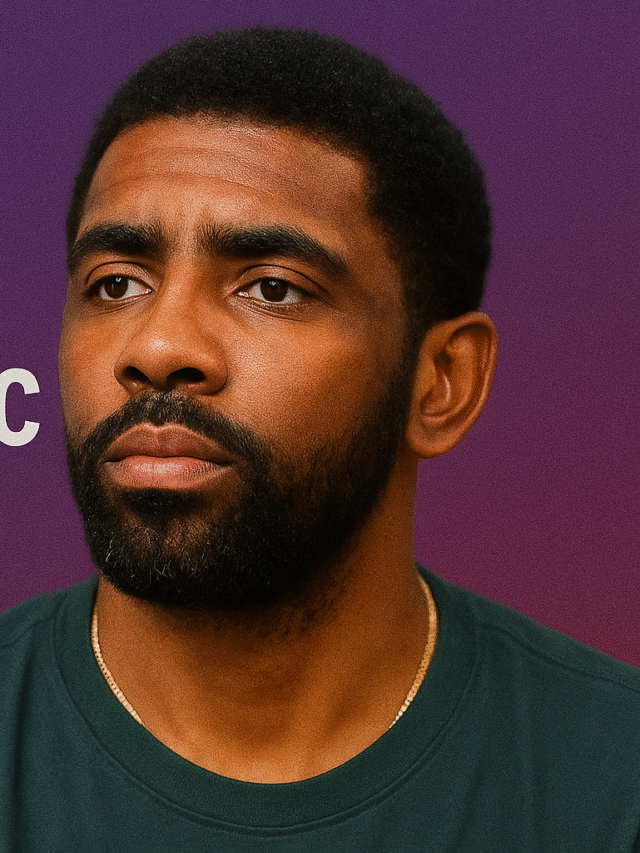Leo Rivas Contract: A First-Hand Report
The air in the conference room was thick with a tension you could almost taste. Cameras flashed, microphones jostled for position, and a low murmur of anticipation filled the space. I stood near the back, my notebook in hand, feeling the collective breath-holding of every journalist, agent, and executive packed into the room. We were all here for one reason: the official announcement of the Leo Rivas contract, a deal that had been the subject of rampant speculation for months. My name is Mohit, and I was there to witness the moment it all became real.
It’s not every day you get to see history being made in the corporate world, but this felt like one of those days. The stakes were impossibly high. Rivas, a visionary whose name had become synonymous with innovation, was at a career crossroads. The company, a titan in its industry, was betting its future on securing his leadership. The whispers in the hallways and the frantic reports from insiders had painted a picture of intense, often contentious, negotiations. Now, the final chapter was about to be written, and I had a front-row seat.
As the key players filed in and took their seats at the long mahogany table, a hush fell over the room. The clicking of cameras was the only sound. This wasn’t just about a signature on a piece of paper; it was about the collision of ambition, legacy, and an astronomical amount of money. It was a story of power, and we were all waiting for the first word.

The Buildup: Months of Whispers and Speculation
To truly understand the weight of that moment, you have to go back to the beginning. The story of the Leo Rivas contract didn’t start in that pressurized conference room. It began months earlier, with quiet rumors that quickly grew into a deafening roar across the industry. Rivas’s previous agreement was nearing its end, and every competitor with a checkbook was circling.
I remember my first tip-off. It came from a trusted source, a mid-level executive who always had his ear to the ground. “They’re moving mountains to keep him,” he told me over coffee, his voice low. “But the offers from outside are… staggering.”
That conversation sent me down a rabbit hole of late-night calls, discreet meetings, and endless digging. The narrative was complex. On one side, you had Rivas’s current company, desperate to retain the man who had single-handedly tripled their market value. On the other, a handful of aggressive rivals saw a once-in-a-generation opportunity to poach a game-changer.
The media frenzy was relentless. Pundits debated his potential moves. Financial analysts modeled the economic impact of his departure versus his retention. Every handshake, every public appearance was scrutinized for hidden meaning. Was that a smile of confidence or a grimace of frustration? Who was he meeting with for dinner? The speculation became a cottage industry in itself. From my perspective on the ground, it was a masterclass in negotiation, played out on a public stage. Both sides were using the media to leverage their position, leaking details that favored their narrative.
The Day of the Announcement: Inside the Room
Which brings us back to that Thursday morning. The press invitation had been intentionally vague, simply citing a “major corporate announcement.” But everyone knew. The energy was electric. I found a spot with a clear view of the podium, wedged between a veteran reporter from a national paper and a young blogger live-streaming from his phone.
The CEO, a woman known for her calm and calculated demeanor, walked to the podium first. She began with standard corporate pleasantries, but her eyes betrayed the pressure. She spoke of the company’s vision, its commitment to excellence, and the importance of leadership. It was the preamble, the corporate throat-clearing before the main event.
Then, she said the words we were all waiting for. “We are here today to affirm our future. And that future, I am thrilled to announce, will continue to be guided by the unparalleled vision of Leo Rivas.”
A wave of relief and excitement seemed to wash over one side of the room, where the company executives sat. On the other side, the agents and lawyers representing Rivas maintained their poker faces, but a subtle nod from his lead counsel told the whole story. The deal was done.
The CEO continued, “After a period of constructive and collaborative discussions, we have finalized a new, multi-year agreement. The Leo Rivas contract is not just a document; it is a partnership. It is a testament to our shared belief in what we can build together.”
At that moment, Leo Rivas himself stood up and walked to the podium. The room erupted in a storm of camera flashes. He was a man who commanded attention without demanding it. Dressed in a simple, tailored suit, he looked more like a professor than a corporate icon. He waited for the flashes to subside, a small, knowing smile on his face.
“Thank you,” he began, his voice calm and steady. “It’s good to see so many familiar faces. I know there’s been a lot of talk these past few months.” He paused, letting the understatement hang in the air. “I’m not going to bore you with the intricate details of the negotiation. What I will say is this: my decision to stay was based on one thing—potential. The potential of what we can still achieve.”
His words were carefully chosen, designed to project stability and forward-looking optimism. He was closing the chapter on the contentious negotiations and opening a new one focused on the work ahead. It was a masterful performance.

Deconstructing the Deal: What We Know
While Rivas was not about to “bore” us with the details, my job was to find them. In the hours and days that followed the press conference, my phone barely stopped ringing. Sources who had been tight-lipped for weeks were suddenly willing to share off-the-record insights. Bit by bit, the architecture of the landmark Leo Rivas contract began to emerge.
This was far more than a simple salary and bonus package. It was a complex tapestry of incentives, performance metrics, and unprecedented levels of autonomy. Here’s a breakdown of what my sources pieced together:
1. Unprecedented Autonomy: Perhaps the most significant part of the deal was not the financial compensation, but the operational freedom granted to Rivas. He secured full creative and strategic control over his division, with a direct line to the board, bypassing several layers of traditional corporate hierarchy. This was a sticking point throughout the negotiations. Rivas believed that bureaucratic red tape was stifling innovation, and he wasn’t going to sign without the authority to cut through it.
2. Performance-Based Incentives: While the base salary was substantial, the real money was tied to ambitious growth targets. The contract outlined a series of stock options and bonuses linked to specific milestones—market share growth, successful product launches, and international expansion benchmarks. This structure aligns his personal financial success directly with the company’s performance, a move praised by shareholders.
3. The “Innovation Fund”: One of the most talked-about clauses was the establishment of a dedicated “Innovation Fund,” a multi-million dollar war chest under Rivas’s exclusive control. This fund is earmarked for investing in speculative projects, acquiring promising startups, and recruiting top-tier talent, all without needing to go through the usual corporate approval process. It’s essentially a venture capital fund within the company, with Rivas as its sole general partner.
4. The “Key Man” Clause: The contract also included a robust “key man” clause, ensuring that if Rivas were to leave for any reason before the term was up, he would face significant financial penalties. Conversely, the company committed to massive investments in his team and projects, making it clear that they weren’t just hiring a man; they were investing in his entire ecosystem.
When I looked at the complete picture, it was clear that this was not a standard employment agreement. It was a strategic alliance. The company wasn’t just paying for a CEO; they were acquiring a visionary and giving him the keys to the kingdom, betting that his genius would pay dividends for years to come.
The Human Element: My Personal Observations
Beyond the financials and the corporate strategy, what struck me most was the human drama playing out in that room. Watching Leo Rivas at the podium, I saw a man who knew his worth and had the courage to demand it. He wasn’t arrogant, but he possessed a deep, unshakable self-belief. He had leveraged his track record of success into a position of incredible power.
I managed to catch a few moments with one of his junior negotiators during the post-conference mingle. The young lawyer, who looked like he hadn’t slept in a week, was visibly relieved. “It was a marathon,” he confided, loosening his tie. “Leo was tough, but fair. He knew exactly what he wanted and wouldn’t settle for less. He wasn’t just negotiating for money; he was negotiating for the freedom to create.”
That sentiment was echoed by a senior executive from the company I spoke with later. “Did we give up a lot? Yes,” she admitted candidly. “But the risk of losing him was far greater. You don’t find people like Leo Rivas every day. Sometimes, you have to break your own rules to keep a rule-breaker on your team.”
Her comment stuck with me. In a world of rigid corporate structures, the Leo Rivas contract was an anomaly. It was a recognition that transcendent talent requires a different set of rules. It was a pragmatic decision rooted in an understanding that to foster true innovation, you have to empower the innovators.
The atmosphere in the room after the official announcement was a mix of exhaustion and exhilaration. Deals were being done in the corners, reporters were frantically filing their stories, and the architects of the agreement were finally allowing themselves a moment of celebration. I saw the CEO shake hands with Rivas’s lead agent. There were no cameras on them, just two professionals who had been on opposite sides of a grueling battle, now sharing a moment of mutual respect. It was a powerful, unscripted image that told a deeper story than any press release ever could.

The Ripple Effect: Industry-Wide Impact
The announcement of the Leo Rivas contract sent shockwaves far beyond the walls of that conference room. The immediate impact was on the stock market. The company’s stock surged over 12% in the hours following the news, adding billions to its market capitalization. Conversely, the stocks of the rival companies that had been trying to woo him saw a noticeable dip. The message from Wall Street was clear: Rivas was a tangible asset, and his leadership had a quantifiable value.
But the long-term effects will be even more profound. This contract has set a new benchmark for executive compensation and autonomy, particularly for high-impact individuals in the tech and innovation sectors. Other top-tier talents will now look at the Rivas deal as the new gold standard. They will demand more control, more performance-based incentives, and more freedom to operate outside of traditional corporate constraints.
I spoke with a veteran HR consultant and compensation expert a few days after the announcement. “This is a paradigm shift,” she explained. “For years, boards have been focused on mitigating risk by standardizing executive roles. The Rivas contract does the opposite. It embraces risk by concentrating power and resources in a single, proven individual. It’s a high-stakes bet, and every board in the country is now discussing whether they have a ‘Leo Rivas’ of their own, and what they’re willing to do to keep them.”
Furthermore, the “Innovation Fund” concept is likely to be replicated. Companies struggling to foster a nimble, startup-like culture within a large bureaucracy will see this as a viable model. It’s a way to institutionalize and fund intrapreneurship, empowering their most creative minds to pursue groundbreaking ideas without being hampered by red tape.
The ripple effect will also be felt in talent acquisition. The best and brightest engineers, designers, and strategists want to work with visionaries like Rivas. By securing him, the company has also become a magnet for top-tier talent, creating a virtuous cycle of innovation and success. The contract wasn’t just about retaining one man; it was about retaining the ability to attract the next generation of leaders.
As a journalist who has covered this industry for years, I see this as a pivotal moment. The balance of power is shifting. Companies are beginning to realize that in the war for talent, the talent itself holds more leverage than ever before. The Leo Rivas contract is the most compelling evidence of this new reality. It will be studied in business schools and boardrooms for years to come, not just as a financial document, but as a strategic masterpiece that has redefined the relationship between a company and its most valuable asset: its people. Standing in that room, I knew I wasn’t just reporting on a contract; I was witnessing the future of corporate leadership being written.










